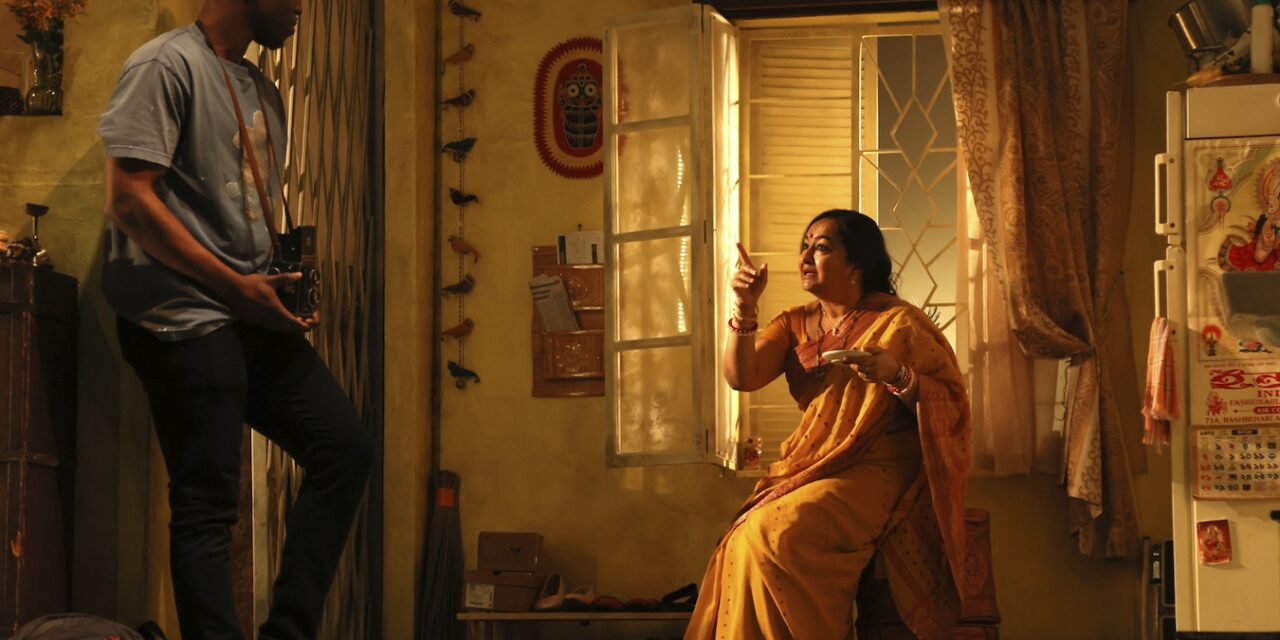Theater Review by Samuel L. Leiter . . . .
Plays running three hours or longer generally tend to deal with big issues, often spread out over large swathes of time. Think, for example, of Angels in America, Leopoldstadt, Prayer for the French Republic, and Our Class; one deals with the AIDS crisis, the others with antisemitism somehow tied to World War II. In Public Obscenities, Shayok Misha Chowdhury’s play, now at Brooklyn’s Polonsky Shakespeare Center after being seen last year at the Soho Rep, about the only “big issue” visible is the subject of queer identity in contemporary India.
However, for all its academic interest to the somewhat ambivalent central character who pursues it, it’s only one ingredient in a rather tasty stew of kitchen sink drama touching on multiple topics over three hours and five minutes. In essence, Public Obscenities is about a gay Indian-American man, Choton (Abrar Haque), who, with his Black American boyfriend, Raheem (Jakeem Dante Powell), visits his family at their decaying Kolkata (Calcutta) home to carry out what he calls, vaguely, “kind of a queer archiving project,” which he’s preparing as part of an application for a dissertation fellowship.
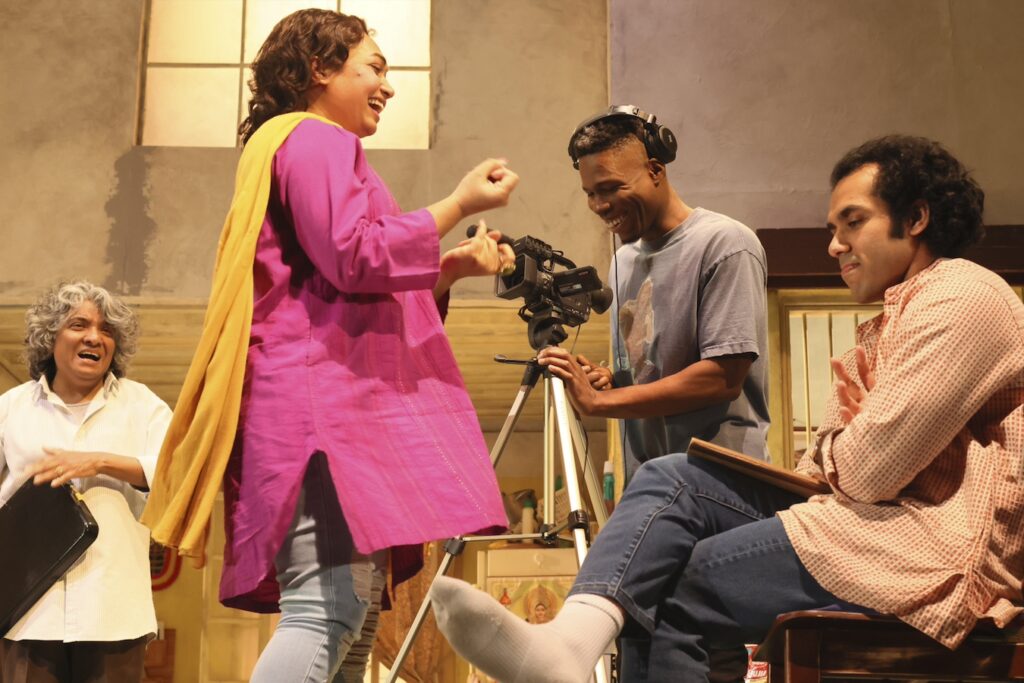
The project involves interviewing locals found on gay dating apps, like Grindr and Planet Romeo. Raheem, a foreign cinema buff, serves as cameraman, exaggeratedly titled Director of Photography. Eventually, this leads to encounters with Shou (Tashnuva Anan), who identifies as a kothi, an Indian gender category for those who assume the feminine role in male-male partnerships, and, although only briefly, Shou’s even more flamboyantly femme friend, Sebanti (NaFis), identified as a hijra.
Whatever the particularities of these sexual orientations—gender and pronoun usage get an airing—the actors of these roles, who combine smartness and charm with comical naivete, practically steal the show. It’s during a chat between Choton and Shou that the play’s titular subject is mentioned in connection with the kind of innocuous sexually-related transgressions that could land one in trouble with the law. Mention of the West’s immoral influences in creating “perverted culture” gets a hearing, but, intriguing as it is, none of this discourse provides the play’s driving force.
Scenes related to Choton’s research occupy only a small part of the play, although currents of sexuality, hetero as well as homosexual, run through much of it. Since Raheem is an outsider, his presence invites numerous opportunities to explain touchstones of Bengali culture, among them prayer rituals, Indian cinema, food, and language. Other subjects talked about include photography and sex. Although none are seen, penises—including Choton’s—are a subject of some concern, particularly in one uncomfortable scene of a private obscenity between the boyfriends that suddenly turns public, although little comes of it besides embarrassment.
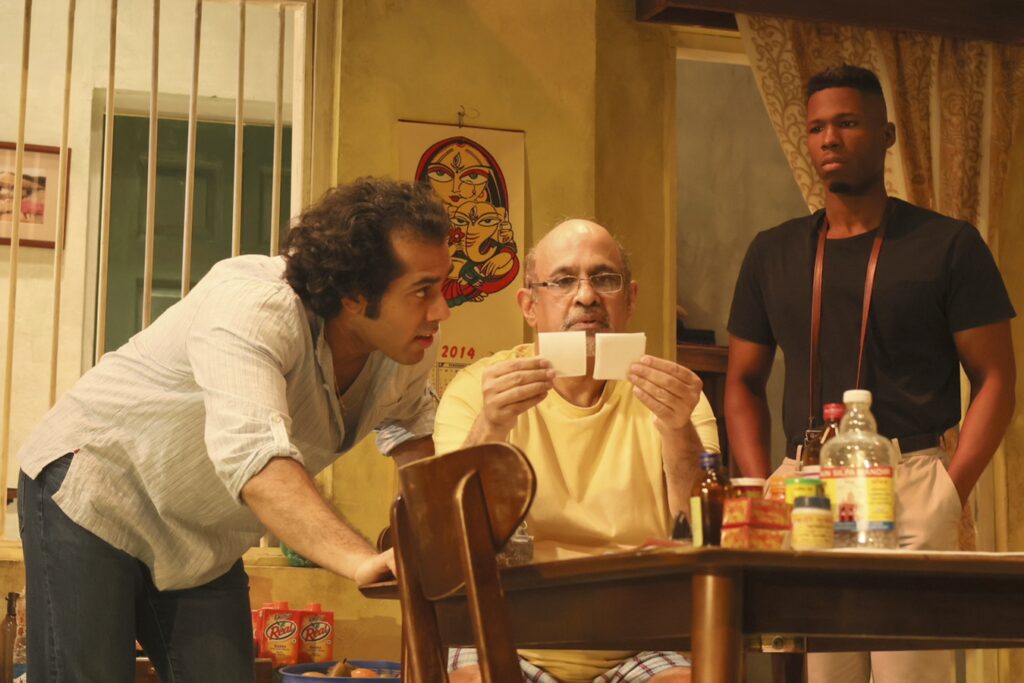

When Bangla, which makes up much of the dialogue, is spoken, it’s usually, but not always, provided in English supertitles on a wall of the shabby, photo-realistic Kolkata home, designed by Peiyi Wong, with close attention even to the appliance sockets. Aside from the actor playing Raheem, everyone is a native Bangla speaker, providing an aura of deep authenticity, including when the characters continually slip in and out of Bangla and English, even in the same sentence.
A dozen scenes, each identified with a projected, numbered title (1. Film Studies, 2. Research, 3. Viewfinder, etc.), move us along as we meet Choton’s sari-wearing aunt, Pishimoni (Gargi Mukherjee), obsessively devoted to her deceased father, whose stern visage looks down over an altar to his memory; her henpecked, feckless husband, Pishe (Debashis Roy Chowdhury), always in boxer shorts and undershirt (the heat), and playing online billiards, hour after hour, with an increasingly flirtatious American woman; the faithful old servant Jitesh (Golam Sarwar Harun), a talented, if self-effacing, folk singer, tasked with caring for Choton’s dementia-ridden grandmother, Thammi, dying offstage and seen only in videos; and the four others mentioned earlier.
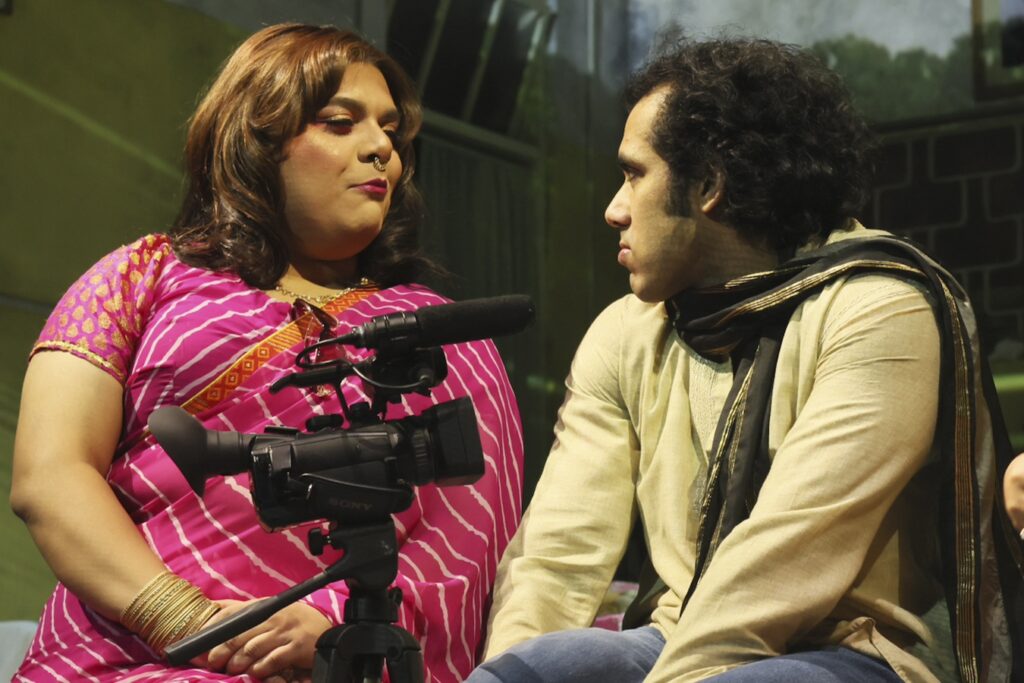

One of the chief topics fueling the meandering structure arises when an old camera reveals an undeveloped film cartridge dating back at least 30 years. When it’s developed, it shows not only that the photographer had a professional touch, but captured the stern grandfather, Dadu, in an uncharacteristically lighthearted mood. So different is his demeanor from the familiar one (in the altar photo) that his identity is questioned. This so baffles Choton that figuring out who took the pictures becomes a concern, never answered, although the staging and lighting of the final moment surely conveys just who it was. It’s really not much of a mystery and it’s not even that clear what the issue is, but it does inspire what little suspense the play accrues.
What holds one’s interest in the events is the fast-paced, amusingly clever, thoroughly naturalistic dialogue, with conversations often being diverted midstream. Also magnetic is the byplay among the convincing characters and the sense evoked that we’re flies on the wall witnessing daily life in a domestic situation that, for all its South Asian customs, seems nevertheless familiar even to outsiders. The pitch-perfect performances help enormously, as does playwright Chowdhury’s closely observed direction, Enver Chakartash’s spot-on costumes, Barbara Samuel’s evocative lighting, and Tei Blow’s atmospheric sound design.
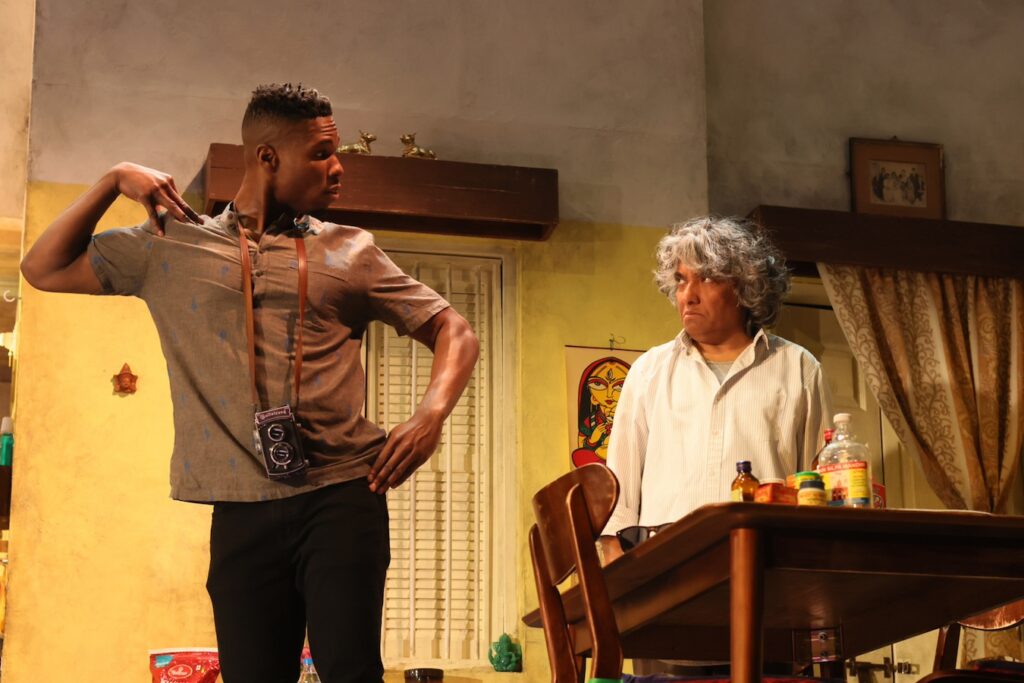

Johnny Moreno provides a video design that opens the play with a full-size screen showing a parade of Indian TV commercials. It leads to titles suggesting that we’re about to see a movie, which, in a sense, we are, given the almost cinematic nature of the production. Later, in a break from naturalism, we see a brief film that reenacts a romantic dream of Pishe’s, in which both he and his wife appear. But, of all the projections, the most memorable for me is the frequently hilarious online chat—which evolves into what might be the beginning of another private obscenity—between Pishe (screen name K_Gang) and his American billiard opponent, Minnesota76, typed (and retyped) as we read it, and replete with all the self-corrections, mistakes, and poor grammar one recognizes immediately as true. Even the timing of the responses, hinting at the writers’ hesitations, could not be better.
Public Obscenities manages to maintain interest in an overlong, overwritten play that often seems about little more than the trivialities of human interaction, paying lip service to potentially significant matters that drift off into obscurity. The exotic setting and the overall authenticity of the expertly acted proceedings help to make a visit worthwhile, especially if you’re hungry for a taste of Kolkata without the heat, mosquitoes, and 20 million people.
Public Obscenities. Through February 18 at the Polonsky Shakespeare Center/Theatre for a New Audience (262 Ashland Place, Downtown Brooklyn). www.tfana.org
Photos: Hollis King


